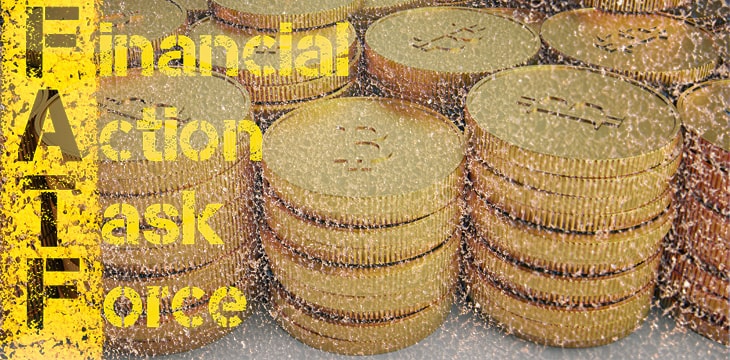|
Getting your Trinity Audio player ready...
|
The Financial Action Task Force (FAFT) has published a report on “so-called stablecoins” at the request of G20 finance ministers. In particular, the report on these asset-backed digital assets looks at issues such as adoption, the ability to transmit them across borders anonymously, and their creators’ governance structures.
Ultimately, stablecoins will be covered by the same laws as other digital assets under the European Union’s Anti-Money Laundering Directive 5 (AMLD5), which has also been “gold plated” by the U.K. AMLD5 treats digital asset exchanges and other custodial wallet operators as financial institutions, applying to them the same KYC/AML requirements. AMLD5 is set to end the free-for-all many exchanges have enjoyed over the past decade, by making it illegal to maintain customer accounts without proper identification.
Dr. Craig Wright has said that, compared to AMLD5 rules, FATF’s standards are “light in comparison“. What the report does show, though, is that local and international regulatory bodies are keeping an eye on issues pertaining to all forms of digital assets.
FATF describes itself as an “independent inter-governmental body that develops and promotes policies to protect the global financial system against money laundering, terrorist financing and the financing of proliferation of weapons of mass destruction. The FATF Recommendations are recognised as the global anti-money laundering (AML) and counter-terrorist financing (CFT) standard”. It began as a G7 initiative in 1989 to combat money laundering, and expanded its scope in 2001 to cover international terrorism financing activities.
So why look at stablecoins specifically?
From a technological standpoint, there isn’t much difference between stablecoins and other blockchain digital assets (or tokens). The difference is mainly how they derive their value. Being pegged to, or (supposedly) backed by reserves of real assets, their value is seen as more “stable” than free-floating digital assets. This makes them a more attractive option for sending value to be swapped for common fiat currencies… but it also carries all the risks stablecoins have—namely, that they may not actually be backed by adequate reserves.
A stablecoin token on a scalable blockchain (like Bitcoin SV), and overseen by a nation’s central bank or government, could actually be a viable and useful thing. In that case, however, it would follow the same rules that govern a nation’s (or region’s) fiat currency.
The FATF report is concerned mostly with the potential for mass adoption of stablecoin assets (which may be higher than free-floating digital assets due to a more reliable value) and the fact they may be transmitted from non-custodial wallets.
“When reviewing current and potential projects, so-called stablecoins appear better placed to achieve mass-adoption than many virtual assets, if they do in fact remain stable in value, are easier to use and are under sponsorship of large firms that seek to integrate them into mass telecommunication platforms.”
A “custodial” wallet is one that uses an online account-based structure, hosting users’ private keys and balances on its servers. “Non-custodial” wallets are the type where users create and store locally their own private keys, derived from a seed phrase. Custodial wallets will be covered under AMLD5 and hosts will need to perform AML/KYC procedures on customers, much like a bank would. This includes simple online wallets as well as any service that would hold a digital asset balance, including exchanges and gaming/gambling platforms.
However since non-custodial wallets are legally just software, anyone can install one and use it without registering anything.
As Dr. Wright said recently in a video interview with Money Button’s Ryan X. Charles, though, even creators of non-custodial wallets may like to know more about their users—even if there aren’t any specific legal requirements…yet.
Governance standards for stablecoin creators
FATF also said it would determine obligations for central developers and governance bodies of stablecoin assets under its revised FATF Standards. These standards would be less concerned with how a stablecoin maintains its value, however, and more to do with insisting on built-in checks to identify users.
For example, “they could ensure that the access to the transfer system is only possible through AML/CFT-compliant regulated VASPs (value added service providers).” The report also acknowledged that “not all so-called stablecoins may have a readily identified central body.”
FATF has advised all jurisdictions to “implement the revised FATF Standards on virtual assets and VASPS as a matter of priority”, starting with G20 nations setting an example. It shouldn’t have any problems doing this. It also promised to review and revise its set of Standards by June 2021 to take into account any changes in technology or adoption, and to provide a guidance to jurisdictions specifically on regulating stablecoin-related issues.
The ability of any digital asset, blockchain or related service to operate outside financial regulations is disappearing fast. Governments and international regulatory bodies will not tolerate any system that permits anonymous transactions and accounts, and will pursue any means necessary to trace digital transactions, or crack down on any network that claims to be anonymous.
Only a legally compliant and scalable blockchain can possibly succeed in the future, and gain mass adoption. Those who can’t do one or either of these things will be confined to the fringes at best, and exist always under a cloud. This leaves Bitcoin as the only platform to process data, build stablecoins and legitimate asset tokens, and handle payments.

 01-03-2026
01-03-2026 




